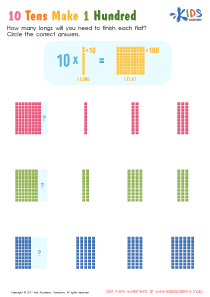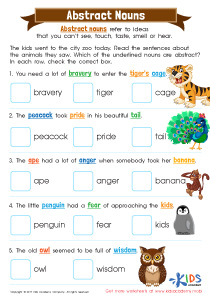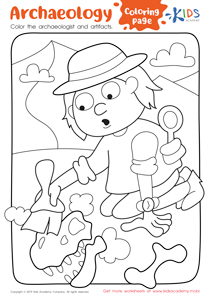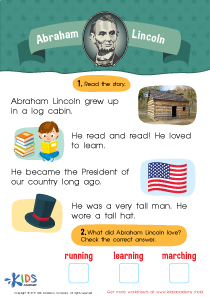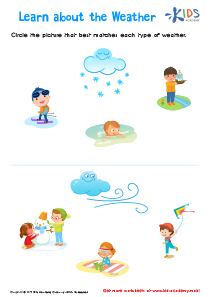Normal Phonics worksheets activities for Ages 3-4
4 filtered results
-
From - To
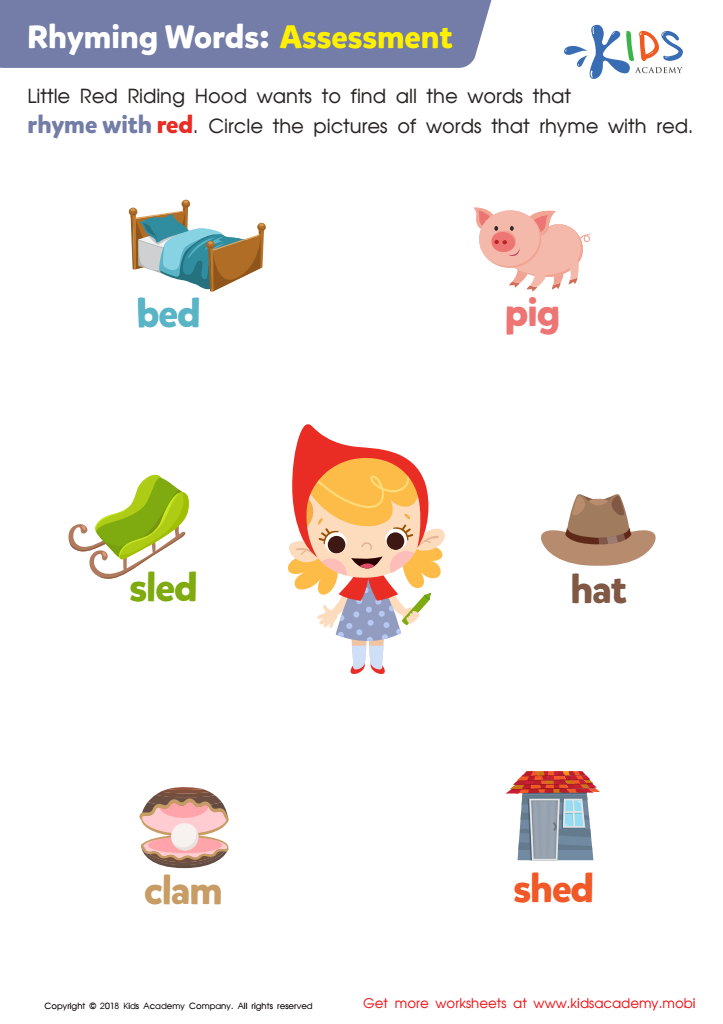

Rhyming Words: Assessment Worksheet
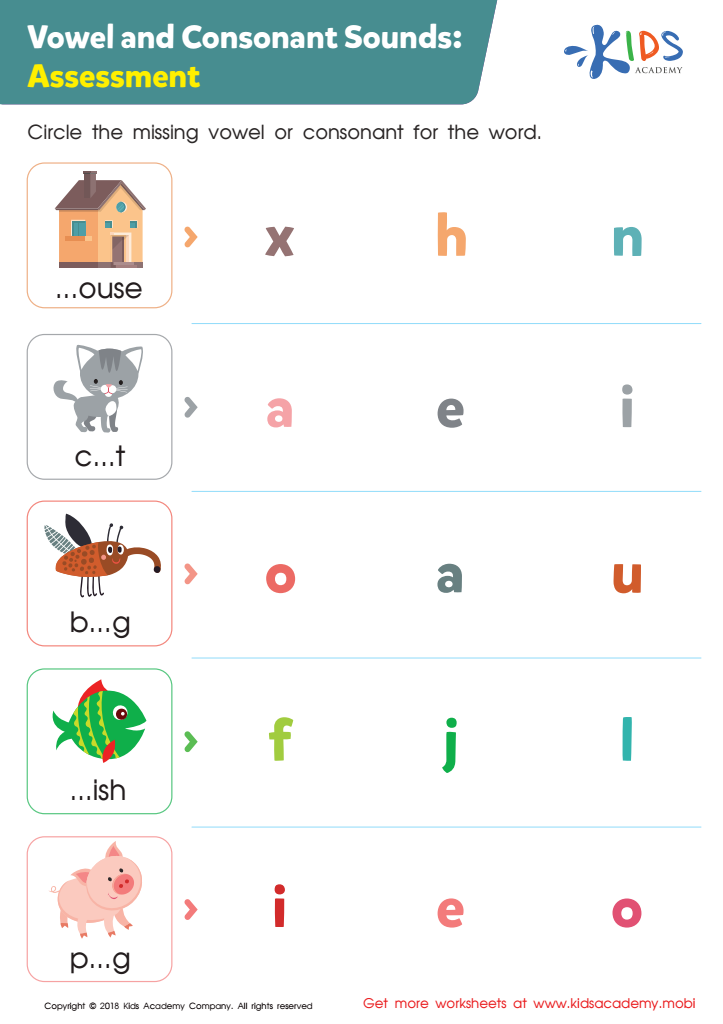

Vowel and Consonant Sounds: Assessment Worksheet
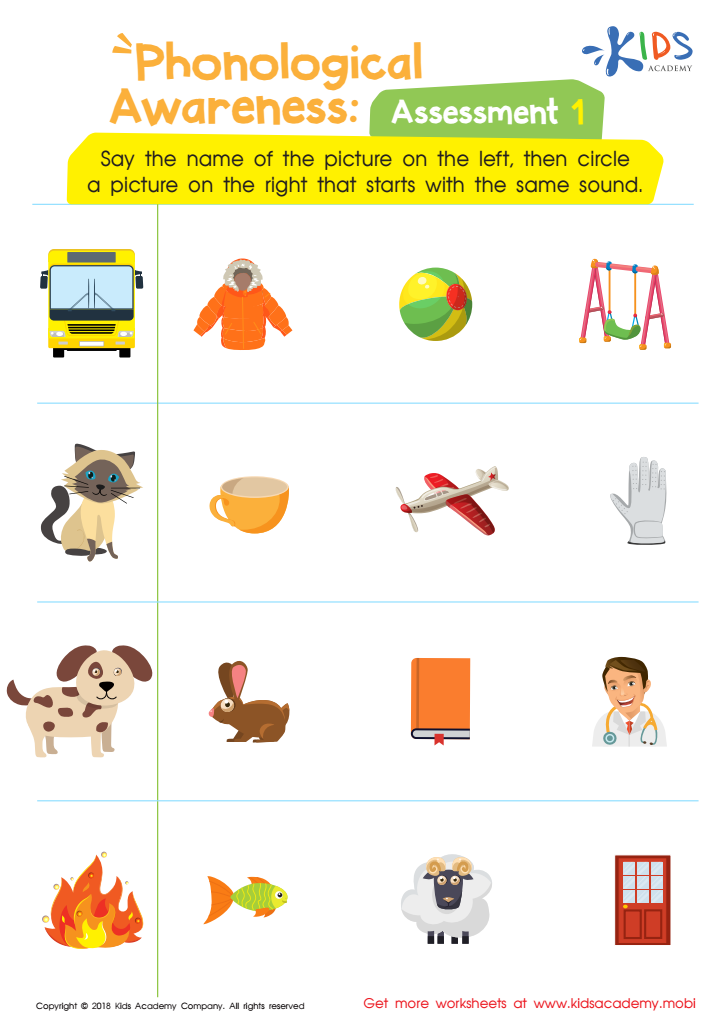

Phonological Awareness: Assessment 1 Worksheet
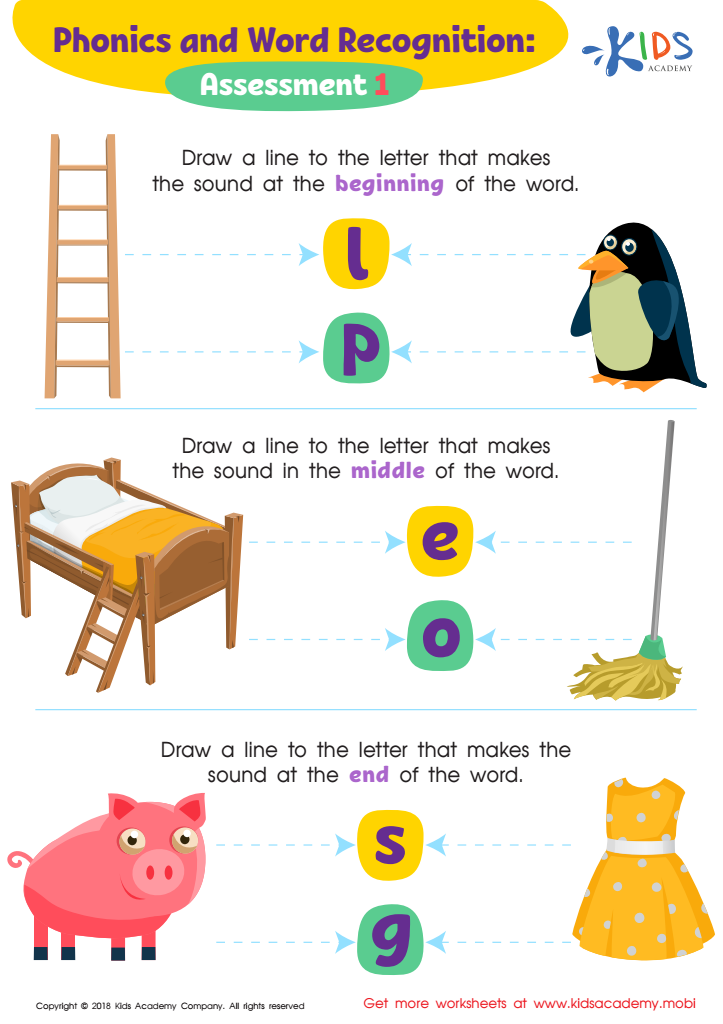

Phonics and Word Recognition: Assessment 1 ELA Worksheet
Normal Phonics worksheets activities stand as a cornerstone in the journey of learning to read and write. These activities are designed to systematically introduce learners to the relationship between letters and sounds, fostering the development of essential literacy skills. Here are several reasons why these activities are beneficial.
Firstly, Normal Phonics worksheets activities provide a structured approach to learning. They guide students through the complexities of the English language in a step-by-step manner, ensuring that learners build a solid foundation of phonemic awareness. This methodical approach helps learners to not only recognize letters but to understand the specific sounds each letter makes, which is crucial for reading fluency and comprehension.
Moreover, these activities offer a variety of exercises that cater to different learning styles. Whether a learner thrives on visual, auditory, or kinesthetic activities, phonics worksheets include matching games, coloring pages, and tracing exercises that engage students in multiple ways. This versatility ensures that all learners can benefit from these activities, making phonics a more inclusive method of teaching reading and writing.
Normal Phonics worksheets activities also foster independence in young readers and writers. As students work through these activities, they gradually build the confidence to decode words on their own. This sense of achievement is vital for their academic growth and motivates them to take on more challenging texts.
Furthermore, these worksheets offer an excellent opportunity for reinforcement. Regular practice with phonics activities helps to solidify the connections between sounds and letters, making reading a more automatic process. This repeated exposure is key to transferring skills from the page to real-life reading situations.
In summary, Normal Phonics worksheets activities are an invaluable resource in early literacy education. They provide a structured, diverse, and engaging way to develop the phonemic awareness necessary for reading and writing proficiency, fostering a lifelong love for learning in the process.
 Assign to the classroom
Assign to the classroom




